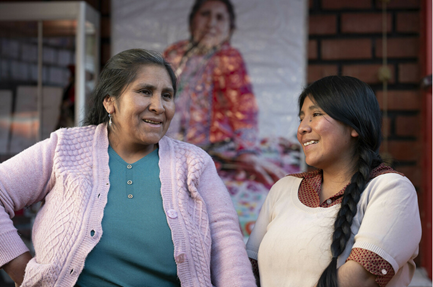Her Money. Her Future.

A woman with money is a woman with options. We’re working to simultaneously improve her earning potential and address normative and systemic barriers to her economic exclusion ensure she has access to and control of her money. This is critical for her safety, and her ability to make decisions. Through savings groups, entrepreneurship programming, and supply chain policy advisory, we’re increasing women’s control, capability, confidence, and choice to earn, save, and invest in themselves, their businesses, families, and communities. These interventions also decrease GBV, improve education and access to healthcare, and increase engagement in collective action, and more.
What changed?
CARE has helped 5.1 million women and girls achieve economic justice, since July 2021, through economic empowerment, shifting gender norms, access to market-based solutions, and more. For every $1 investment, interventions range from an estimated $8-$25 return for women, in terms of increased savings and incomes for participants
- 150K+ entrepreneurs have improved access to finance or skills
- 375K+ people in supply chains have improved gender equality policies.
- 19M savings group members and $690M+ savings mobilized since 2008.
- 68% of people reached were women/girls (vs. CARE average of 61%).
How did we get there?
The Women’s Economic Justice team is focused on making market systems work for women and delivering high ROI programs where women have control, capability, confidence, and choice to earn, save, and invest in themselves, their businesses, families, and communities.
- Challenging social norms: 64% of projects worked to challenge social norms.
- Women and girls first: 69% of projects were gender transformative (43%) or responsive (26%).
- Working with local market systems and partners: 70% of projects worked with partners (vs. CARE average of 62%), including 3 national government partners who adopted our savings group model, and 35+ partners and financial service providers to support entrepreneurs.
What did we learn?
The benefits of financial inclusion extend beyond money. When she has money, the lives of her and her family improve. She is 40% more food secure, 75% more resilient, 15% more politically active, 80% likely to invest in her children’s education, and more. Financial inclusion puts more than money in women’s hands: it equips them to make their own decisions, take entrepreneurial risks, and reshape the role of women in their families and communities.
Everyone benefits when women are active, dynamic players in local economies and societies.
Where do we go next?
Investing in women’s economic power can help the global economy grow an additional $10 trillion by 2030 (Eurasia Group, Oct 2023). Yet, market systems have largely been designed by and for men. These systems exclude women from opportunities, resources, and markets, and prevent women from having access to and control of finances. To create sustainable change at scale, these systems must work for women too.
Cross-sector partnerships that close the gender gap and engage banks, governments, and corporations can enhance the effectiveness of donations by building women's needs into policies, norms, and institutions.
Read more about ways cross-sector partnerships can enhance the effectiveness of donations by measuring and reporting the ROI of their programs, to deliver more economic growth that promotes equality in our latest oped in World Economic Forum.
Want to learn more? Visit https://www.care.org/our-work/womens-economic-justice/

